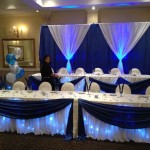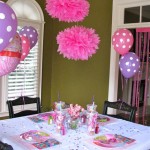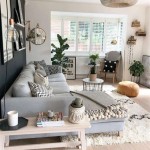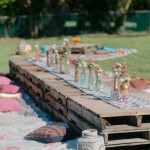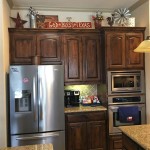Baby Room Home Decor Ideas: Creating a Nurturing and Functional Space
Designing a baby's room is a significant undertaking that requires careful consideration of aesthetics, functionality, and safety. The goal is to create an environment that fosters comfort, promotes restful sleep, and stimulates early development. This article provides a comprehensive overview of baby room home decor ideas, focusing on key elements that contribute to a nurturing and practical space for both the child and the parents.
Choosing a Theme and Color Palette
Establishing a theme and selecting a color palette form the foundation of any successful baby room design. The theme can be based on a variety of inspirations, including animals, nature, storybook characters, or abstract patterns. It is important to choose a theme that is both visually appealing and conducive to a calming atmosphere. Overly stimulating or complex themes can be distracting and detrimental to sleep.
Color psychology plays a critical role in creating the desired ambiance. Soft, muted tones such as pastel blues, greens, and yellows are often preferred due to their calming and soothing effects. Neutral colors like beige, gray, and white offer versatility and can be easily complemented with pops of color through accessories and artwork. Avoid using overly bright or intense colors, especially reds and oranges, as they can be overstimulating and potentially disruptive to sleep patterns. Consider the overall lighting of the room when selecting colors, as natural and artificial light can significantly alter the perceived shade and tone.
Incorporating textures is another important aspect of creating a visually interesting and stimulating environment. Different textures, such as soft fabrics, smooth wood, and woven baskets, can provide tactile experiences that contribute to the baby's sensory development. However, it's crucial to prioritize safety and avoid textures that could pose a choking hazard or be easily pulled apart.
Prioritizing Functionality and Safety
Beyond aesthetics, the functionality and safety of the baby room are paramount. The layout of the room should be carefully planned to ensure easy access to essential items and to minimize potential hazards. Furniture placement should promote a clear and unobstructed path, especially around the crib and changing area.
The crib is the centerpiece of the baby room and must meet current safety standards. Ensure that the crib is sturdy, has a firm mattress that fits snugly, and has no missing or broken parts. Avoid using crib bumpers, as they pose a suffocation risk. Instead, consider breathable mesh liners or decorative crib sheets. Position the crib away from windows, radiators, and cords to prevent accidents.
The changing table should be equipped with all necessary supplies, such as diapers, wipes, and creams, within easy reach. Always keep one hand on the baby when changing diapers to prevent falls. A changing table with built-in storage is a practical choice, as it helps to keep the area organized and clutter-free. If using a portable changing pad, ensure it is placed on a stable surface and never leave the baby unattended.
Proper storage solutions are essential for keeping the baby room organized and safe. Shelving units should be securely mounted to the wall to prevent tipping. Use baskets and bins to organize toys, books, and clothing. Avoid storing heavy items on high shelves, as they could pose a falling hazard. Consider investing in a comfortable glider or rocking chair for feeding and soothing the baby. Position the chair in a well-lit area and ensure it is stable and comfortable.
Electrical safety is another crucial consideration. Cover all unused electrical outlets with safety plugs. Keep cords out of reach of the baby. Consider using cordless window coverings to eliminate the risk of strangulation. Install a smoke detector and carbon monoxide detector in the room and test them regularly.
Incorporating Decorative Elements and Personal Touches
Once the foundational elements of the room are in place, decorative elements and personal touches can be added to create a unique and inviting space. Artwork, mobiles, and wall decals can add visual interest and stimulation, while personalized items such as framed photos or handmade crafts can create a sense of warmth and connection.
Mobiles are a popular decorative element for baby rooms. Choose a mobile with soft colors and gentle movements to promote relaxation and visual development. Ensure the mobile is securely attached to the crib and is out of the baby's reach. Regularly check the mobile for any loose parts or signs of wear and tear.
Wall decals are a versatile and affordable way to add personality to the baby room. Choose decals that complement the overall theme and color palette. Ensure the decals are made of non-toxic materials and are easy to remove without damaging the walls. Consider creating a gallery wall with framed artwork or photos. Choose lightweight frames and secure them to the wall with appropriate hardware.
Lighting plays a crucial role in creating a calming and comfortable atmosphere. Install a dimmer switch to control the intensity of the overhead light. Use a nightlight to provide a soft glow during nighttime feedings and diaper changes. Avoid using harsh or bright lights, as they can be disruptive to sleep. Consider using blackout curtains or shades to block out sunlight during naptime.
Personalized items, such as a handmade quilt or a framed birth announcement, can add a special touch to the baby room. These items not only serve as decorative elements but also create a sense of connection and belonging. Consider incorporating elements that reflect the parents' interests and hobbies, creating a space that is both personal and welcoming.
When selecting decorative elements, prioritize safety and functionality. Avoid using small objects that could pose a choking hazard. Ensure that all materials are non-toxic and free of harmful chemicals. Regularly clean and disinfect decorative items to prevent the spread of germs.
Creating a baby room is a process that requires careful planning and attention to detail. By focusing on functionality, safety, and aesthetics, it is possible to create a nurturing and stimulating environment that supports the baby's development and provides a comfortable space for both the child and the parents. Regular reassessment of the room's environment is also crucial, as the baby's needs and developmental stage evolve over time.


27 Unique Nursery Ideas From Designer Baby Rooms

22 Best Diy Baby Room Decor Ideas For A Dreamy Nursery In 2025

22 Best Diy Baby Room Decor Ideas For A Dreamy Nursery In 2025

How To Decorate A Baby S Room My Design Week

Fun Design Tips For Your Baby S Room Happyplay Co

Baby Room Design Ideas

Pin On Decor Ideas

68 Nursery Ideas For A Cozy And Colorful Baby Room

Easy And Effective Baby Room Decor Ideas Designcafe


